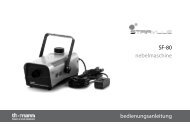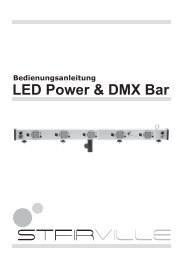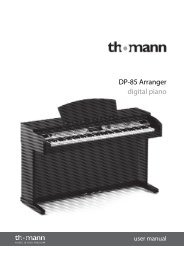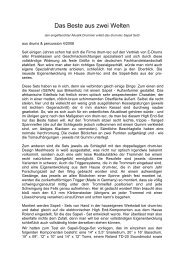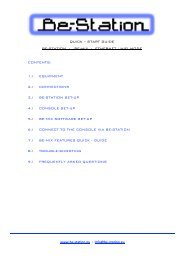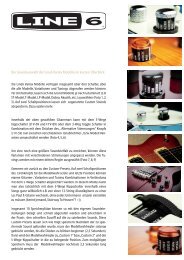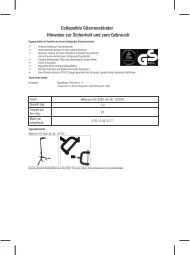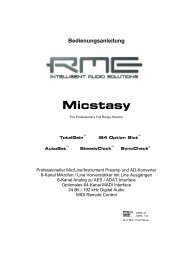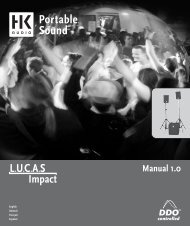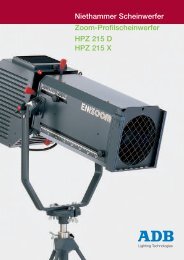Create successful ePaper yourself
Turn your PDF publications into a flip-book with our unique Google optimized e-Paper software.
Dirty & Clean<br />
The Dirty control sets the amount of post-distortion signal that is heard at the output.<br />
The Clean control sets the amount of the clean signal, which is comprised of the signals filtered out by the low-pass and highpass<br />
crossovers before the distortion stage. In other words, all the frequencies removed from the signal by the filters.<br />
It is important to remember that these are not ‘wet’ and ‘dry’ controls – use the standard Mix control at the top of the effect interface<br />
in order to mix between the pre- and post-effect signals.<br />
Tone<br />
The Tone control is a simple -6 dB per octave low-pass filter for the Dirty signal after the distortion stage. It allows you to roll off<br />
harsh high frequencies that may have been generated in the signal as part of the distortion effect.<br />
Bit Crusher<br />
The Bitcrusher effect provides a type of digital distortion that occurs when the sample-rate<br />
and bit-depth of the audio is reduced. It allows you to simulate the sound of early samplers,<br />
useful for underground hip-hop and other ‘lo-fi’ styles.<br />
Bits<br />
This control reduces the bit depth from a maximum of 16 bits to a minimum of 1.82 bits,<br />
which is effectively almost pure digital noise. The noise generated by the bit-reduction process<br />
is called quantisation noise.<br />
Early digtal drum machines and samplers tended to have 8 or 12 bit resolution.<br />
Freq<br />
This control adjusts the sample rate frequency of the audio processed by the effect. and ranges from a maximum of 100 kHz to a<br />
minimum of 1 Hz.<br />
Lower sample rates result in an aliasing effect on the processed audio.<br />
Drive<br />
This is an OTA-type distortion stage after the crossover filters, enabling you to add gain and colour to the signal before it is processed<br />
by the bit and sample-rate reduction stages.<br />
LP Freq & HP Freq<br />
These crossover filters exist before the bit and sample-rate reduction stages, allowing you to dictate which part of the signal is<br />
processed. For example, you can process the high end of a kick drum while leaving the deep low end unchanged.<br />
The low-pass filters frequencies above the specified frequency. It has a slope of -6 dB per octave, and ranges from 1Hz to 100<br />
Hz.<br />
The high-pass filters frequencies above the specified frequency. It also has a slope of -6 dB per octave, and ranges from 1 kHz to<br />
100 kHz.<br />
These filters are crossover filters – the frequencies that are filtered out before the distortion stage are accessible via the Clean<br />
control.<br />
Dirty & Clean<br />
The Dirty control sets the amount of processed signal that is heard at the output.<br />
The Clean control sets the amount of the clean signal, which is comprised of the signals filtered out by the low-pass and highpass<br />
crossovers before processing. In other words, all the frequencies removed from the signal by the filters.<br />
It is important to remember that these are not ‘wet’ and ‘dry’ controls – use the standard Mix control at the top of the effect interface<br />
in order to mix between the pre- and post-effect signals.<br />
Tone<br />
The Tone control is a simple -6 dB per octave low-pass filter for the Dirty signal after the bit and sample-rate reduction stages. It<br />
allows you to roll off harsh high frequencies that may have been generated in the signal as part of the processing.<br />
1



